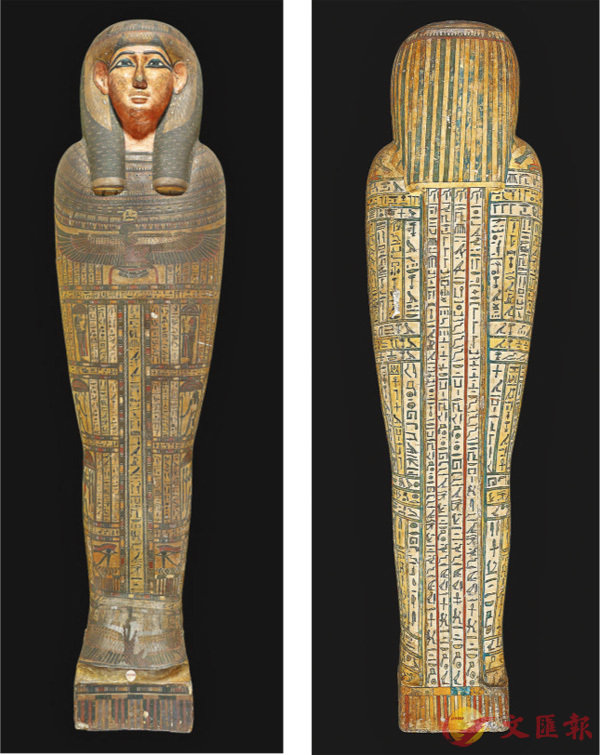
內斯達華狄特的木乃伊(內棺木)Mummy of Nestawedjat(Inner coffin)
第二十五王朝(約公元前700年至680年)25th Dynasty(about 700BC-680BC)
木乃伊在形狀、防腐處理的質素和顏色都各有不同,通常都由多層麻布包裹。內斯達華狄特的木乃伊是一個典範作品。
她身上的麻布厚達五厘米;她的裹屍布由幾條織帶綁緊,原本染上了深粉紅色或紅色,而分析則揭示布料使用了紅花作為染色的材料,可惜這種植物染料對光線非常敏感,現在單憑肉眼已難以察覺任何顏料的痕跡。
內斯達華狄特和她的3個棺木於1880年送抵大英博物館,在這之前,相關的歷史資料並不多。木乃伊的裹屍布與外觀並未能為死者的性別提供太多線索。在舊的X光技術之下,她的木乃伊在上世紀60年代被誤認作男性,而這個說法最後被新的發現推翻了,她是一位婦人。
圖像由大英博物館託管會提供。
Mummies varied in shape, quality of embalming and colour. They were usually wrapped in multiple layers of linen. Nestawedjat's mummy is an excellent example, wrapped in linen up to 5 cm thick. Her outer shroud, secured into place by several textile bands, was originally dyed in dark pink or red. Analysis has revealed the use of safflower, a plant pigment that is unfortunately very light sensitive and is now barely visible.
A mummy's bandages and external appearance provide few clues as to the sex of the deceased. Little is known of the history of Nestawedjat and her associated coffins prior to their arrival at the British Museum in 1880. She was incorrectly identified as male in the 1960s old X-ray. The new CT scan finding suggests that the mummy was indeed that of a woman.
Images in courtesy of the Trustees of the British Museum.
■資料提供︰香港科學館Hong Kong Science Museum
■展期:即日至2017年10月18日
逢星期三見報

